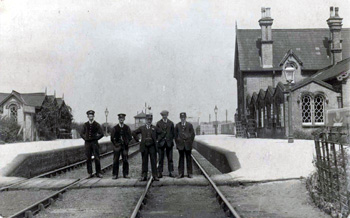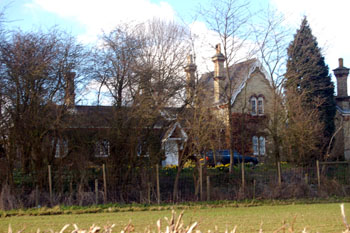Southill Station

Southill Station in 1920 [Z880/2]
For 105 years Southill Station was a stop on the Midland line from Wigston, nearly four miles south of Leicester, through Bedford to Hitchin. This line had seven stations in Bedfordshire (north-south): Sharnbrook; Oakley; Bedford; Cardington; Southill; Henlow; Shefford.
In 1853 the Midland Railway Company obtained approval from parliament for its new line to follow a route mapped out the previous winter by its engineer Charles Liddell, who estimated that construction would cost £304,000 from Hitchin to Bedford and another £596,000 from Bedford to Leicester - a cost of £19,000 per mile. Construction began that autumn by Thomas Brassey, though the 880 yard Old Warden Tunnel between Southill and Cardington was constructed by a local builder, John Knowles of Shefford.
The Crimean War meant shortages of manpower and materials but work progressed. Shefford station was commenced in February 1856 but a shortage of bricks slowed work. Nevertheless, the railway opened formally on 8th May 1857, having been used by goods trains for the preceding month. The first passenger train took 42 minutes to travel from Hitchin to the terminus, just off Ampthill Road in Bedford. Just over eleven years later the line was downgraded from a main line to a branch line when the Bedford to Saint Pancras line opened on 13th July 1868. Falling use meant that the railway closed on 1st January 1962. The railway station buildings are now residential accommodation in private hands.

Southill Station March 2008
The former Department of Environment later listed the station buildings as Grade II, of special interest. The designer is listed as C.H.Driver and the style as: "Simplified Venetian Gothic". The station is built out of yellow brick with polychrome brick dressings and has slate roofs. It is built in a T-plan, with the north-east block having two storeys and the south-east block a single storey.